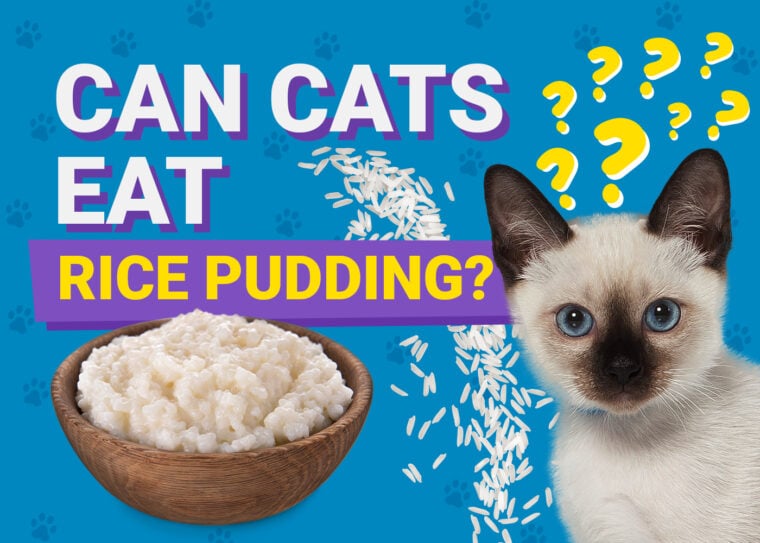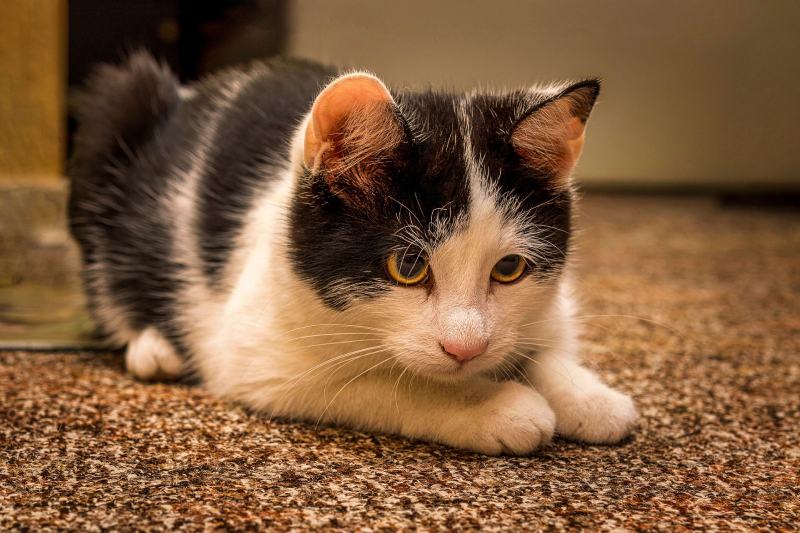
With their loving little head butts and soft purrs, it’s hard not to give your cat anything their heart desires. However, wise pet parents discern between what’s safe to feed their felines and what should be reserved for human company. While rice pudding may be a creamy comforting treat to us, it may be harmful to your cat depending on what ingredients are included. Any dessert that includes chocolate or loads of sugar is a no-no for your furry friends. Plain rice pudding without any sweeteners or flavors may be okay in small portions, as long as your cat isn’t lactose intolerant.
What Is Rice Pudding?
Popular commercially produced rice pudding includes white rice, milk or cream, eggs, sugar, and salt. In small amounts, none of these ingredients are toxic. However, the milk, sugar, and salt may be harmful in large amounts, which we’ll cover in a minute.
It’s important to evaluate individual recipes from different companies since ingredients can vary. Even though milk and sugar aren’t toxic ingredients to your cat, they aren’t necessarily recommended. Most cats are lactose intolerant, which means they can’t process milk.
Sugar and artificial sweeteners are extremely bad for them. For example, off-brand rice puddings may include preservatives and flavors that can be toxic to your cat, such as xylitol. Sugars and sweeteners are linked to devastating diseases like diabetes, just as they are in humans. In fact, cats can’t even taste sweetness, so the indulgence is wasted on them—to the detriment of their health.
Of course, it’s never okay to feed your cat any amount of chocolate, caffeine, or grapes, including raisins. Make sure your bowl of pudding is completely free from these ingredients if you decide to let your kitty taste a bite.
Can Cats Eat Rice Pudding?
If you make rice pudding from home, you’re more in control of what goes in the mix. Although we don’t recommend letting your cat feast on human food of any form, homemade food is generally safer since you can safely exclude harmful substances, such as nutmeg.
As long as your cat isn’t lactose intolerant, you can let them sample a little spoonful of homemade rice pudding—simply made with white rice, cream, and a pinch of salt. You should avoid sugar entirely since it promotes obesity, and only allow them to have a little bite since cats don’t really need the extra carbohydrates in the rice.

Can Cats Drink Milk?
Cats love fatty foods. Biologically speaking, cats are obligate carnivores that nutritionally require a high amount of protein and fat, with minimal carbohydrates. This is one reason why cats crave milk. Dairy is a good supply of protein and fat and has been popularized as a cat-friendly food for the duration of the television area.
Rumor has it that the tall tales actually began on quiet farms before Hollywood spun yarns about cats daintily sipping out of saucers. There was actually some truth to the stereotype. Fresh cow’s milk doesn’t contain as much lactose as the store-bought milk we bring home today. Straight from the cow, milk contains a much higher percentage of cream than when it’s diluted into whole, 2%, or skim. Cream actually doesn’t contain as much lactose, so farm-fresh milk wasn’t as likely to harm your kitten’s tummy as the half-gallon jug sitting in your fridge.
But what about kittens? We all know that cats drink their mother’s milk for their first couple months of life. How are they able to nurse but aren’t able to process lactose a short time later? The answer is in the enzymes required to tolerate lactose. Both humans and cats have the enzyme at birth through the time they’re weaned. However, if they don’t use it, they promptly lose it. If you have a 5-year-old cat who hasn’t been drinking milk since they were a kitten, chances are good that they’re lactose intolerant because they lost the digestive enzyme over time. This is why the majority of cats are lactose intolerant.

What Foods Can I Feed My Cat?
Honestly, the best thing you can feed your cat is their own cat food. While some human foods may not be inherently harmful, pet obesity is on the rise in the western world and they really don’t need the extra calories. Obesity makes your cat more susceptible to diseases such as arthritis and diabetes and can shorten their life expectancy by up to 2.5 years.
A healthy cat eats a well-balanced diet recommended by their veterinarian, with a modest number of treats and snacks. If you want to treat your cat to something a little special, opt for meats and proteins over fats and carbs since they’re obligate carnivores. For example, a bite of plain cooked chicken is better than a cracker even if the ingredients aren’t toxic.
Knowing exactly what your feline companion can and cannot eat will help you become the best pet parent. Recognizing that not all cat bowls are equal is also key! The Hepper NomNom Cat Bowl sets itself apart from traditional options by catering to the specific needs of cats. The innovative design offers whisker relief via shallow dishes and promotes digestion with a slight bowl elevation. Find out if the Hepper NomNom is right for your cat by clicking here.
At Pet Keen, we’ve admired Hepper for many years and decided to take a controlling ownership interest so that we could benefit from the outstanding designs of this cool cat company!
Conclusion
As long as the recipe doesn’t contain any blatantly toxic ingredients, such as chocolate, rice pudding isn’t likely to cause serious harm to your cat. However, the rice provides unnecessary carbohydrates, and the cream may not be safe for all cats because it’s estimated that the majority of the feline population is lactose intolerant. If your cat can safely process lactose, you can sneak them a spoonful of rice pudding every once in a while, but we don’t recommend making it a habit. In general, cats should eat their own food with a conservative sampling of meat-based cat treats to maintain a healthy weight.
Related Reads:
- Can Cats Eat Pecan Pie? (Vet Reviewed Nutrition Facts)
- Can Cats Eat Cornbread? Vet Reviewed Facts & FAQ
Featured Image Credit: JumpStory








